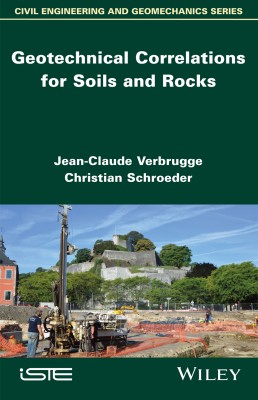
Unlike structural engineers, geotechnical engineers deal with a natural material. They have no choice over their medium and must instead accommodate themselves to the material. Moreover, while developments in numerical modeling require more and more specific parameters issued from sophisticated laboratory tests, soil and rock testing programs tend to remain largely limited to in situ tests in order to reduce costs and time in response to the competition between contractors.
This book provides resources to help the engineer in their choice of adequate modeling parameters and in controlling uncertain test results. The authors have collected many published correlations between in situ test results (CPT, CPTu, PMT, DPT, SPT, DMT, geological surveys, etc.) and common laboratory parameters like soil/rock identification, classification, permeability, strength, deformation, consolidation, earth pressure, compaction and saturation.
Cross-correlations between in situ test parameters are also provided as well as some typical values.
1. Physical Parameters.
2. Identification of Soil Types.
3. Hydraulic Parameters.
4. Strength Parameters of Saturated and Dry Soils.
5. Soil Deformations.
6. Soil State Parameters.
7. Consolidation.
8. Coefficient of Earth Pressure at Rest.
9. Soil Compaction Tests.
10. Unsaturated Soils.
11. Cross Relations between InSitu Test Parameters.
12. Rocks.
13. Usual Values of Soils and Rock Parameters.
Jean-Claude Verbrugge is Emeritus Professor and retired Director of the Geotechnical Laboratory at the Université Libre de Bruxelles in Belgium. He is a member of many scientific societies and is currently Chairman of the Board of four companies active in geotechnical surveying, testing and consulting.
Christian Schroeder is a civil engineer. He earned his PhD at the University of Liège in Belgium, where he created a specialized rock mechanics laboratory. Since 2010, he has been honorary Professor at the Université Libre de Bruxelles and a manager of the consulting company CES Consult.